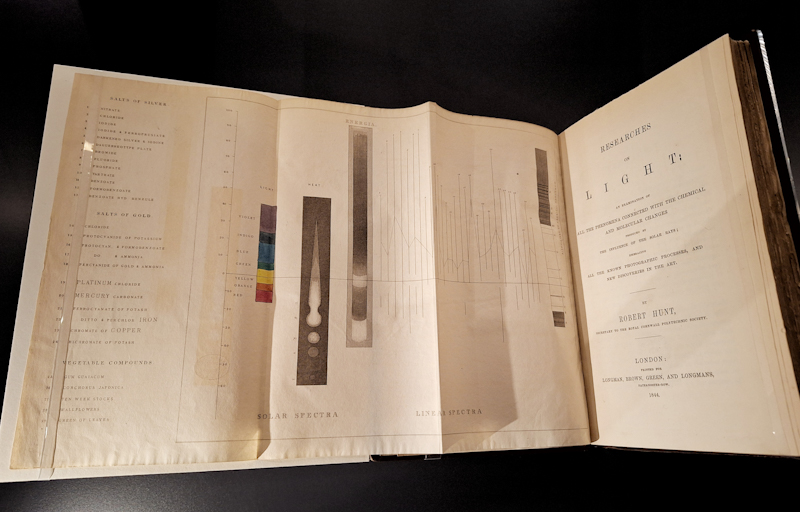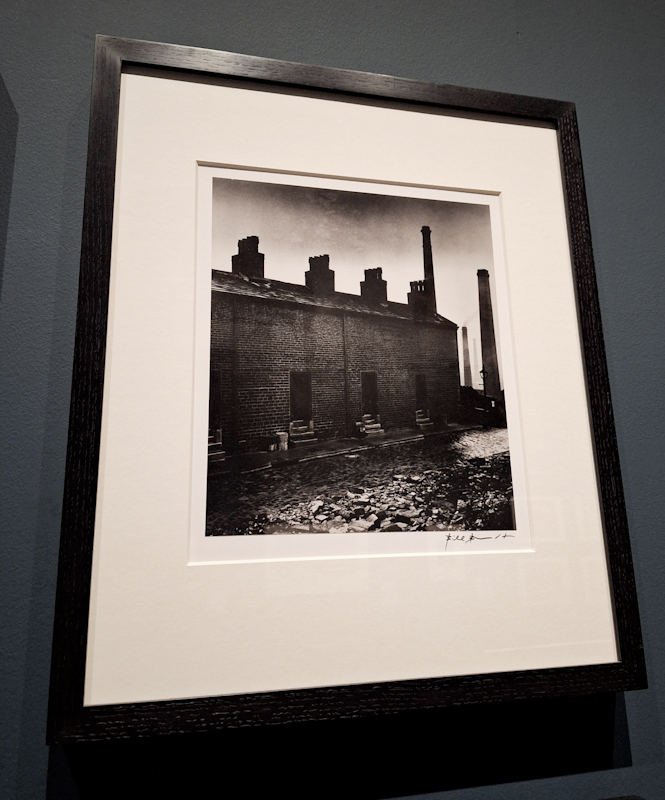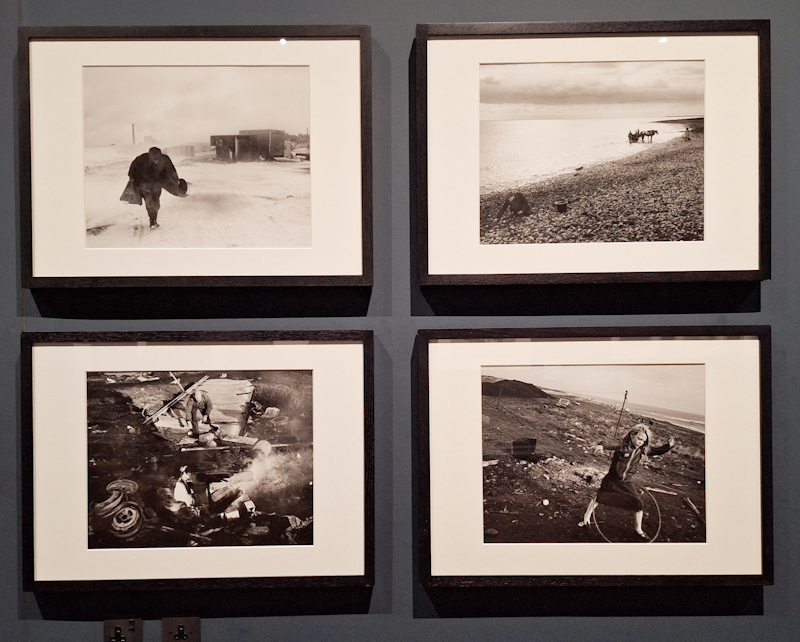Finishing off 2023 with a visit to the Victoria and Albert Museum for New Year’s Eve.
And for once the Photography Centre was relatively quiet. We had the place almost to ourselves.

I really enjoyed the current selection they had chosen for display.
This large albumen print by Geoffrey Bevington 1861, taken for the International Exhibition in 1862 as part of a larger commission to promote the Family leather business. The photographer was 17 years old at the time.

There was a good selection of books including Robert Hunts 1844
Researches on light: an examination of all the phenomena connected with the chemical and molecular changes produced by the influence of the solar rays.
Hunt believed that the sun was made up of three distinct elements: light, heat,and what he termed ‘Energia’, or photographic power. But his ideas proved controversial, and he abandoned them by the time of his death.

These albumen prints looked a little unusual. In the 1860s, John Henry Parker of the British and American Archaeological Society of Rome began an ambitious project to photographically record the city’s principal monuments, art and architecture. He worked with a team of photographers, including Smeaton, whose early experiments with flash photography proved vital to revealing Rome’s underground catacombs. Smeaton used magnesium flares to illuminate the dark interiors and usually hidden features, including wall paintings.

There were a number of these Xrays by James Green and James H. Gardiner
(active in the 1890s)
Sciagraphs of British Batrachians and Reptiles
1896

These Bill Brandt prints looked great, always a favourite. Photographed in 1937, printed 1975.


And I always have to stop for a Bernhard and Hilla Becher. Especially Silo for Coal, Big Pit Colliery, South Wales, 1975

Chris Killip
From the series Sea Coal, Lynemouth,
Northumberland
1983-84

Work I wasn’t aware of but kept me for a while.
Sarah Pickering
White Goods
2007-08
This photograph is from Pickering’s series Incident, which depicts environments used by fire fighters for training exercises.

The RPS Library contains thousands of photography books of all types, published over nearly 200 years. Its a great space
In 2017, the RPS Library, along with a vast collection of photographs, negatives, cameras and historical papers, was transferred to the V&A.

I don’t usually stop too long at colour photography, but there were a few standouts.
Vasantha Yogananthan, Lovebird, 2015

Hoda Afshar, a photograph from the series
Speak the Wind
2020

Vera Lutter
Radio Telescope, Effelsberg XV:
September 12, 2013
German photographer Vera Lutter transforms shipping containers into camera obscuras and uses them to produce unique paper negatives of monumental structures.

Antony Cairns
LDN E./., 2015
Collotypes and electronic ink screens
TY02, 2017
Antony Cairns made these collotypes, a form of ink-based photographic print
on paper, by scanning the photographic negatives of images he had taken of his home city, London. He then uploaded the scans onto hacked e-readers and wrenched the screens out of their casings, fixing the digital ink permanently. The screens, also shown here, were in turn reproduced as collotypes. Amazing.


(Text lifted from exhibition panels)
And if I go to see the Photography Centre, it’s taken as granted that I’ll be dragged through the Ceramics collection by Steph.

I really don’t mind, as the storage and displays are impressive. Not quite on the scale of the Corning Museum of Glass, USA, but getting there.


Plus, I wouldn’t get the chance to find my new favourite piece.
Carolein Smit (born 1960)
‘Hare on a cauliflower with knife and fork‘
2010
The rib-cage of a wounded hare is exposed, its entrails spilling out. Seated on a cauliflower, flanked with a knife and fork, we are reminded of the duality of our love of animals and their meat.”

Happy New Year everyone, wishing you a great 2024.
Happy New Year.
Excellent way to spend the New Year evening, better than the way I spent mine.